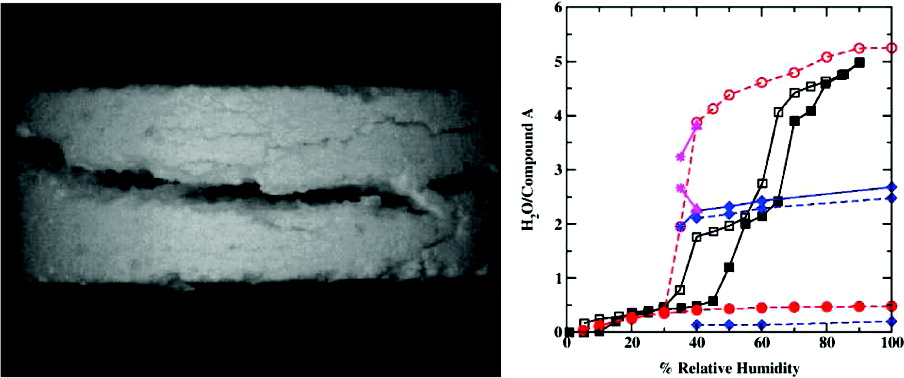J. Phys. Chem. B 113, 5929-5937 (2009)
The pharmaceutical compound A, 3-{2-oxo-3-[3-(5,6,7,8-tetrahydro[1,8]naphthyridin-2-yl)propyl]imidazolidin-1-yl}-3(S)-(6-methoxypyridin-3-yl)propionic acid, is known to exist in five different crystalline forms that differ in the hydration state ranging from the anhydrous desolvate over hemihydrate, dihydrate, and tetrahydrate forms to the pentahydrate. The formation of the higher hydrates and the concomitant lattice expansion leads to undesirable tablet cracking at higher humidities. In this work, particle-based simulation techniques are used to explore the hydrate formation of compound A as a function of humidity. It is found that a simulation strategy employing Monte Carlo simulations in the isobaric−isothermal and Gibbs ensembles and transferable force fields, which are not parametrized against any experimental data for compound A, is able to yield satisfactory crystal structures for the anhydrate and pentahydrate and to predict the existence of all five hydrates.
